Give the Boys a Great Big Hand Read online
Page 2
“She was sitting in the front seat with a two-piece costume on,” Parker said, “a two-piece costume and these long black net stockings. What the costume was, it was these little black panties covered with sequins, and this tiny little bra that tried to cover the biggest set of bubs I ever seen on any woman in my entire life I swear to God. I did a double take, and I leaned into the car and said, ‘You just passed a stop light, lady, and you made a U-turn over a double white line. And for all I know, we got a good case against you for indecent exposure. Now how about that?’”
“What did she say?” Cotton Hawes asked. He alone of the detectives surrounding Parker’s desk was not drinking coffee. Hawes was a tea drinker, a habit he’d picked up as a growing boy. His father had been a Protestant minister, and having members of the congregation in for tea had been a daily routine. The boy Hawes, for reasons best known to his father, had been included in the daily congregational tea-drinking visits. The tea, hefty, hot, and hearty, had not stunted his growth at all. The man Hawes stood six feet two inches in his stocking feet, a redheaded giant who weighed in at 190 pounds.
“She looked at me with these big blue eyes set in a face made for a doll,” Parker said, “and she batted her eyelashes at me and said, ‘I’m in a hurry. If you’re going to give me the goddamn ticket, give it to me!’”
“Wow!” Hawes said.
“So I asked her what the hurry was, and she said she had to be on stage in five minutes flat.”
“What kind of stage? One of the burly houses?”
“No, no, she was a dancer in a musical comedy. A big hit, too. And it was just about eight-thirty, and she was breaking her neck to catch the curtain. So I pulled out my fountain pen and my pad, and she said, ‘Or would you prefer two tickets to the biggest hit in town?’ and she started digging into her purse, those bubs about to spill out of that tiny little bra and stop traffic away the hell up to the Aquarium.”
“So how was the show?” Carella asked.
“I didn’t take the tickets.”
“Why not?”
“Because this way I had a private show of my own. It took me twenty minutes to write that ticket, and all that time she was squirming and wiggling on the front seat with those gorgeous pineapples ready to pop. Man, what an experience!”
“You’re not only mean,” Carella said, “you’re also horny.”
“That I am,” Parker admitted proudly.
“I caught a guy once on Freeman Lewis Boulevard,” Carella said. “He was doing eighty miles an hour. I had to put on the siren before he’d stop. I got out of the squad car and was walking over to his car when the door popped open, and he leaped out and started running toward me.”
“A hood?” Hawes asked.
“No, but that’s just what I thought. I figured I’d stumbled on a guy who was running from the law. I expected him to pull a gun any minute.”
“What did he do?”
“He came up to me hopping up and down, first one leg, then the other. He said he knew he was speeding, but he’d just had an acute attack of diarrhea, and he had to find a gas station with a men’s room in a hurry.”
Parker burst out laughing. “Oh, brother, that takes it,” he said.
“Did you let him go?” Hawes asked.
“Hell, no. I just wrote the ticket in a hurry, that’s all.”
“I’ll tell you one I let go,” Hawes said. “This was when I was a patrolman with the 30th. The guy was clipping along like a madman, and when I stopped him he just looked at me and said, ‘You going to give me a ticket?’ So I looked right back at him and said, ‘Damn right, I’m going to give you a ticket.’ He stared at me for a long time, just nodding his head. Then he said, ‘That’s it, then. You give me a ticket, and I’ll kill myself.’”
“What the hell did he mean?”
“That’s just what I said. I said, ‘What do you mean, mister?’ But he just kept staring at me, and he didn’t say another word, just kept staring and nodding his head, over and over again, as if this ticket was the last straw, do you know what I mean? I had the feeling that this had just been one of those days where everything in the world had gone wrong for him, and I knew—I just knew as sure as I was standing there—that if I slapped a summons on him, he would actually go home and turn on the gas or jump out the window or slit his throat. I just knew it. I could just sense it about the guy.”
“So you let him go. The Good Samaritan.”
“Yeah, yeah, Samaritan,” Hawes said. “You should have seen that guy’s eyes. You’d have known he wasn’t kidding.”
“I had a woman once,” Kling, the youngest of the detectives started, and Patrolman Dick Genero burst into the squadron carrying the small, blue overnight bag. One look at his eyes, and anyone would have known he wasn’t kidding. He carried the bag in his right hand, far away from his body, as if afraid to be contaminated by it. He pushed his way through the gate in the slatted railing that separated the squadroom from the corridor outside, went directly to Parker’s desk, and plunked the bag down in the middle of it with a finality that indicated he had done his duty and was now glad to be rid of it.
“What have you got, Dick?” Hawes asked.
Genero could not speak. His face was white, his eyes were wide. He swallowed several times, but no words came from his mouth. He kept shaking his head and pointing at the bag. Hawes stared at the bag in puzzlement, and then began to unzip it. Genero turned away. He seemed ready to vomit momentarily.
Hawes looked into the bag and said, “Oh, Jesus, where’d you get this?”
“What is it?” Kling asked.
“Oh, Jesus,” Hawes said. “What a goddamn thing. Get it out of here. Jesus, get it out of the squadroom. I’ll call the morgue.” The rugged planes of his face were twisted in pain. He could not look into the bag again. “I’ll call the morgue,” he said again. “Jesus, get it out of here. Take it downstairs. Get it out of here.”
Carella picked up the bag and started out of the room.
He did not look into it. He did not have to.
He had been a cop for a long time now, and he knew instantly from the expression on Hawes’s face that the bag must contain a segment of a human body.
Now that’s pretty damn disgusting.
But let’s get something straight. Death is pretty damn disgusting, and there are no two ways about it. If you are one of those people who like motion pictures where a man fires a gun and a small spurt of dust explodes on the victim’s chest—just a small spurt of dust, no blood—then police work is not the line for you. Similarly, if you are one of those people who believe that corpses look “just like they’re sleeping,” it is fortunate you are not a cop. If you are a cop, you know that death is seldom pretty, that it is in fact the ugliest and most frightening event that can over take a human being.
If you are a cop, you have seen death at its ugliest because you have seen it as the result of violent upheaval. You have, more than likely, puked more than once at the things you have seen. You have, more than likely, trembled with fear, because death has a terrifying way of reminding the strongest human that his flesh can bleed and his bones can break. If you are a cop, you will never get used to the sight of a corpse or a part of a corpse—no matter how long you deal with them, no matter how strong you are, no matter how tough you become.
There is nothing reassuring about the sight of a man who has been worked over with a hatchet. The skull, a formidable piece of bone, assuming the characteristics of a melon, the parallel wounds, the criss-crossing wounds, the bleeding ugly wounds covering the head and the face and the neck, the windpipe exposed and raw, throbbing with color so bright, but throbbing only with color because life is gone, life has fled beneath the battering rigidity of an impersonal hatchet blade; there is nothing reassuring.
There is nothing beautiful about the post-mortem decomposition of a body, man or woman, child or adult, the gas formation, the discoloration of head and trunk tissues, the separation of epidermis, the staining of v
eins, the protrusion of tongue, decomposed liquefied fat soaking through the skin resulting in large yellow-stained areas; there is nothing beautiful.
There is nothing tender about bullet wounds, the smeared and lacerated flesh of contact wounds, the subcutaneous explosion of gases, the tissues seared and blackened by flame and smoke, the embedded powder grains, the gaping holes in the flesh; there is nothing tender.
If you are a cop, you learn that death is ugly, and frightening, and disgusting. If you are a cop, you learn to deal with what is ugly, frightening, and disgusting or you quit the force.
The object in the overnight bag was a human hand, ugly, frightening, and disgusting.
The man who received it at the morgue was an assistant medical examiner named Paul Blaney, a short man with a scraggly black mustache and violet eyes. Blaney didn’t particularly enjoy handling the remains of dead people, and he often wondered why he—the junior member on the medical examiner’s staff—was invariably given the most particularly obnoxious stiffs to examine, those who had been in automobile accidents, or fires, or whose remains had been chewed to ribbons by marauding rats. But he knew that he had a job to do. And that job was—given a human hand that has been severed at the wrist from the remainder of the body, how can I determine the race, sex, age, probable height, and probable weight of the person to whom it belonged?
That was the job.
With a maximum of dispatch, and a minimum of emotional involvement, Blaney set to work.
Fortunately, the hand was still covered with skin. A lot of bodies he received simply weren’t. And so it was quite simple to determine the race of the person to whom the hand had belonged. Blaney determined that race rather quickly, and then jotted the information on a slip of paper.
RACE: White.
Sex was another thing again. It was simple to identify the sex of an individual if the examiner was presented with remains of the breasts or sexual organs, but all Blaney had was a hand. Period. Just a hand. In general, Blaney knew, the female of the species usually had less body hair than the male, more delicate extremities, more subcutaneous fat and less musculature. Her bones, too, were smaller and lighter, with thinner shafts and wider medullary spaces.
The hand on the autopsy table was a huge one. It measured twenty-five centimeters from the tip of the middle finger to the base of the severed wrist, and that came to something more than nine and a half inches when translated into laymen’s English. Blaney could not conceive of such a hand having belonged to a woman, unless she were a masseuse or a female wrestler. And even granting such exotic occupations, the likelihood was remote. He had, nonetheless, made errors in determining the sex of a victim from sex-unrelated parts in the past, and he did not wish to make such an error now.
The hand was covered with thick, black, curling hair, another fact that seemed to point toward a male identification; but Blaney carried the examination to its conclusion, measuring the bone shafts, studying the medullary spaces, and jotting down his estimate at last.
SEX: Male.
Well, we’re getting someplace, he thought. We now know that this gruesome and severed member of a human body once belonged to a white male. Wiping his forehead with a towel, he got back to work again.
A microscopic examination of the hand’s skin told Blaney that there had been no loss of elasticity due to the decrease of elastic fibers in the dermis. Since he was making his microscopic examination in an effort to determine the victim’s age, he automatically chalked off the possibility of the man’s having been a very old one. He knew, further, that he was not likely to get anything more from a closer examination of the skin. The changes in skin throughout the growth and decline of a human being very seldom provide accurate criteria of age. And so he turned to the bones.
The hand had been severed slightly above the wrist so that portions of the radius and ulna, the twin bones that run from the wrist to the elbow, were still attached to the hand. Moreover, Blaney had all the various bones of the hand itself to examine: the carpus, the metacarpal, the phalanx.
He mused, as he worked, that the average layman would— just about now—begin to consider all of his devious machinations as scientific mumbo jumbo, the aimless meanderings of a pseudo-wizard. Well, he thought, the hell with the average layman. I know damn well that the ossification centers of bones go through a sequence of growth and fusion, and that this growth and fusion takes place at certain age levels. I know further that by studying these bones, I can come pretty close to estimating the age of this dead white male, and that is just what I am going to do, average layman be damned.
The entire examination that Blaney conducted on the bones took close to three hours. His notes included such esoteric terms as “proximal epiphysial muscle” and “os magnum” and “multangulum majus” and the like. His final note simply read:
AGE: 18-24.
When it came to the probable height and weight of the victim, Blaney threw up his hands in despair. If he had been presented with a femur, a humerus, or a radius in its entirety, he would have measured any one of them in centimeters from joint surface to joint surface with the cartilage in place, and then made an attempt at calculating the height using Pearson’s formula. For the radius, if he’d had a whole one and not just a portion of one, the table would have read like this:
MALE FEMALE
86.465 plus 3.271 times 82.189 plus 3.343 times
length of radius. length of radius.
Then, to arrive at an estimate of the height of the living body, he’d have subtracted one and a half centimeters from the final result for a male, and two centimeters for a female.
Unfortunately, he didn’t have a whole radius, so he didn’t even make an attempt. And although the hand gave him a good knowledge of the size of the victim’s bones, he could not make a guess at the weight of the victim without a knowledge of the muscular development and the adipose tissue, so he quit. He wrapped the hand and tagged it for delivery to Lieutenant Samuel G. Grossman at the Police Laboratory. Grossman, he knew, would perform an isoreaction test on a blood specimen in order to determine the blood group. And Grossman would undoubtedly try to get fingerprint impressions from the severed hand. In this respect, Blaney was positively certain that Grossman would fail. Each finger tip had been neatly sliced away from the rest of the hand by the unknown assailant. A magician couldn’t have got a set of prints from that hand, and Grossman was no magician.
So Blaney shipped off the hand, and he concluded his notes; and what he finally transmitted to the bulls of the 87th was this:
RACE: White.
SEX: Male.
AGE: 18-24.
The boys had to take it from there.
Detective Steve Carella was the first of the boys to take it from there.
He took it early the next morning. Sitting at his desk near the grilled squadroom windows, watching the rain ooze along the glass panes, he dialed Blaney’s office and waited.
“Dr. Blaney,” a voice on the other end of the wire said.
“Blaney, this is Carella up at the 87th.”
“Hello,” Blaney said.
“I’ve got your report on that hand, Blaney.”
“Yeah? What’s wrong with it?” Blaney asked, immediately on the defensive.
“Nothing at all,” Carella said. “In fact, it’s very helpful.”
“Well, I’m glad to hear that,” Blaney said. “It’s very rare that anyone in the goddamn department admits a medical examination was helpful.”
“We feel differently here at the 87th,” Carella said smoothly. “We’ve always relied very heavily upon information provided by the medical examiner’s office.”
“Well, I’m certainly glad to hear that,” Blaney said. “A man works here with stiffs all day long, he begins to have his doubts. It’s no fun cutting up dead bodies, you know.”
“You fellows do a wonderful job,” Carella said.
“Well, thank you.”
“I mean it,” Carella said fervently. “Ther
e isn’t much glory in what you fellows do, but you can bet your life it’s appreciated.”
“Well, thank you. Thank you.”
“I wish I had a nickel for every case you fellows made easier for us to crack,” Carella said, more fervently this time, almost carried away by himself.
“Well, gosh, thanks. What can I do for you, Carella?”
“Your report was an excellent one,” Carella said, “and very helpful, too. But there was just one thing.”
“Yes?”
“I wonder if you can tell me anything about the person who did the job.”
“Did the job?”
“Yes. Your report told us a lot about the victim, and that’s excellent…”
“Yes?”
“Yes, and very helpful. But what about the perpetrator?”
“The perpetrator?”
“Yes, the man or woman who did the surgery.”
“Oh. Oh, yes, of course,” Blaney said. “You know, after you’ve been examining corpses for a while, you forget that someone was responsible for the corpse, do you know what I mean? It becomes…well, sort of a mathematical problem.”
“I can understand that,” Carella said. “But about the person responsible for this particular corpse, could you tell anything from the surgery?”
“Well, the hand was severed slightly above the wrist.”
“Could you tell what kind of a tool was used?”
“Either a meat cleaver or a hatchet, I would say. Or something similar.”
“Was it a clean job?”
“Fairly. Whoever did it had to hack through those bones. But there were no hesitation cuts anywhere on the hand, so the person who severed it from the body was probably determined and sure.”
“Skillful?”
“How do you mean?”
“Well, would you say the person had any knowledge of anatomy?”
“I wouldn’t think so,” Blaney answered. “The logical place for the cut would have been at the wrist itself, where the radius and ulna terminate. That certainly would have been easier than hacking through those bones. No, I would discount anyone with a real knowledge of anatomy. In fact, I can’t understand why the hand was dismembered, can you?”

 Alice in Jeopardy: A Novel
Alice in Jeopardy: A Novel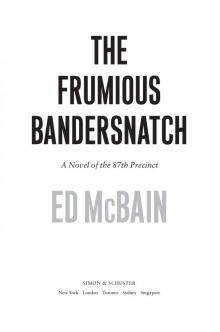 The Frumious Bandersnatch
The Frumious Bandersnatch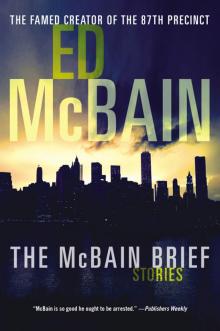 The McBain Brief
The McBain Brief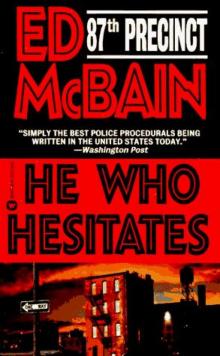 He Who Hesitates
He Who Hesitates Mischief
Mischief Fat Ollie's Book: A Novel of the 87th Precinct
Fat Ollie's Book: A Novel of the 87th Precinct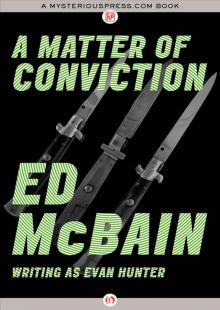 A Matter of Conviction
A Matter of Conviction Ice
Ice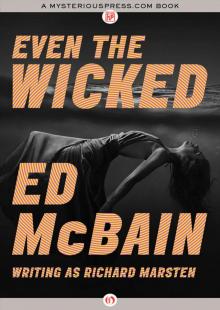 Even the Wicked
Even the Wicked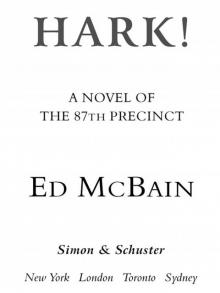 Hark!
Hark!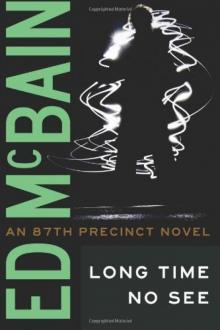 Long Time No See
Long Time No See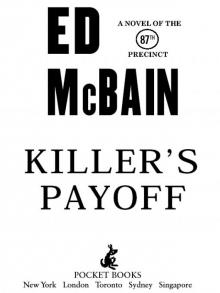 Killer's Payoff
Killer's Payoff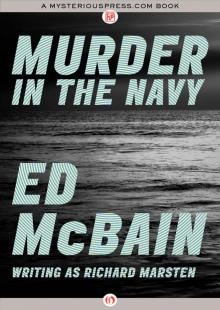 Murder in the Navy
Murder in the Navy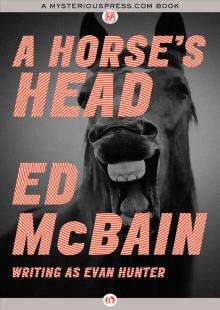 A Horse’s Head
A Horse’s Head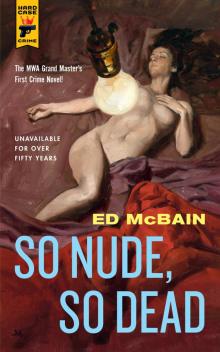 So Nude, So Dead
So Nude, So Dead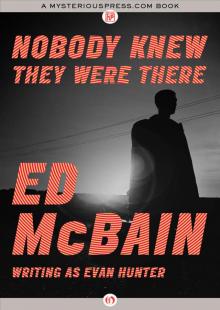 Nobody Knew They Were There
Nobody Knew They Were There Alice in Jeopardy
Alice in Jeopardy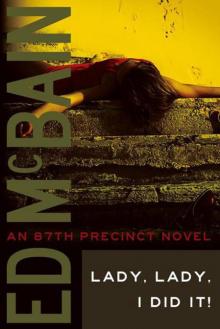 87P14-Lady, Lady, I Did It!
87P14-Lady, Lady, I Did It!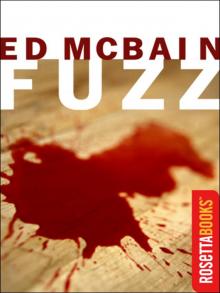 Fuzz
Fuzz Jack and the Beanstalk (Matthew Hope)
Jack and the Beanstalk (Matthew Hope)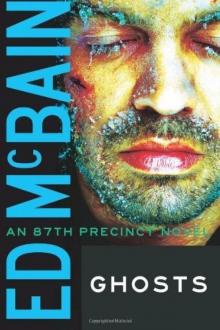 Ghosts
Ghosts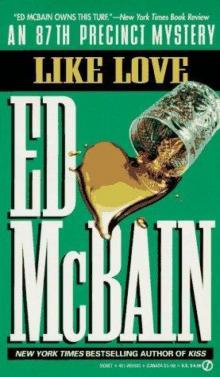 Like Love
Like Love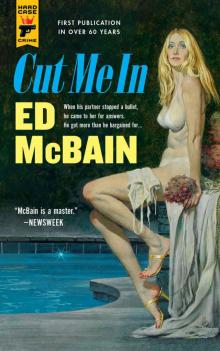 Cut Me In (Hard Case Crime)
Cut Me In (Hard Case Crime)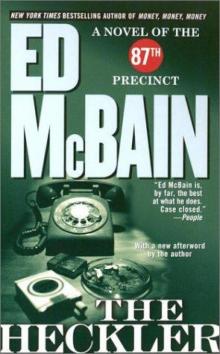 The Heckler
The Heckler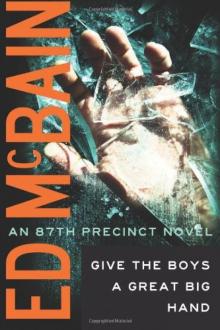 Give the Boys a Great Big Hand
Give the Boys a Great Big Hand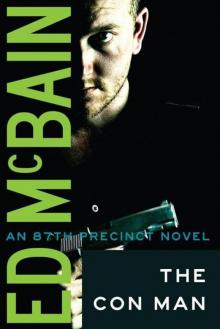 The Con Man
The Con Man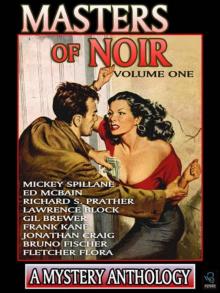 Masters of Noir: Volume One
Masters of Noir: Volume One Money, Money, Money
Money, Money, Money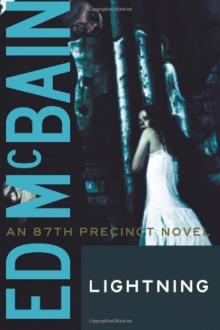 Lightning
Lightning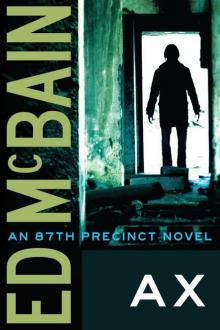 Ax
Ax The Spiked Heel
The Spiked Heel Scimitar
Scimitar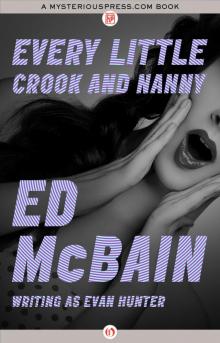 Every Little Crook and Nanny
Every Little Crook and Nanny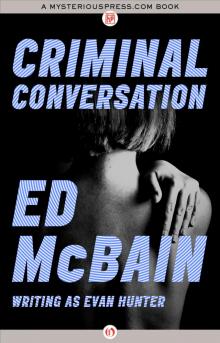 Criminal Conversation
Criminal Conversation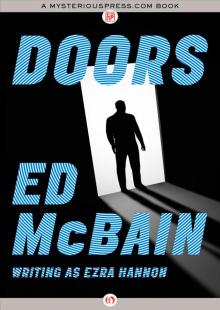 Doors
Doors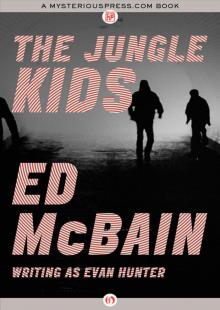 The Jungle Kids
The Jungle Kids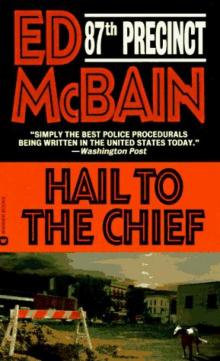 Hail to the Chief
Hail to the Chief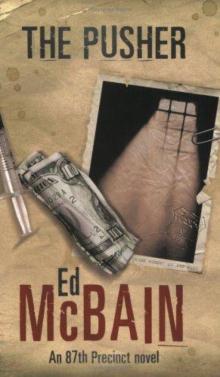 Pusher
Pusher Killer's Choice
Killer's Choice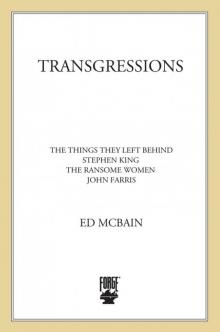 Transgressions Volume 2
Transgressions Volume 2 King's Ransom
King's Ransom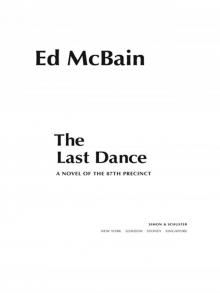 The Last Dance
The Last Dance Fiddlers
Fiddlers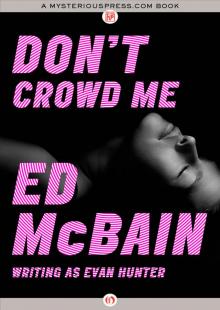 Don’t Crowd Me
Don’t Crowd Me Cinderella
Cinderella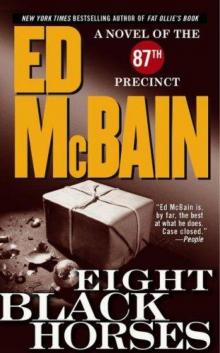 Eight Black Horses
Eight Black Horses Big Man
Big Man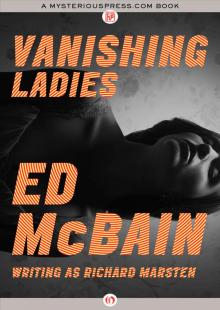 Vanishing Ladies
Vanishing Ladies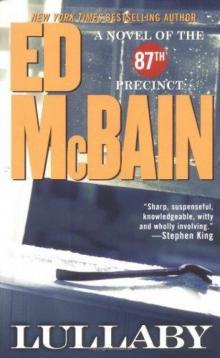 Lullaby
Lullaby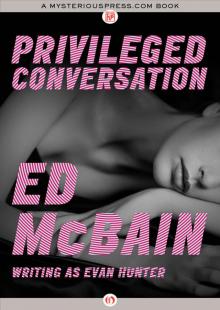 Privileged Conversation
Privileged Conversation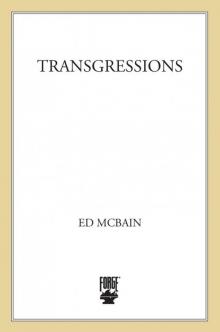 Transgressions, Volume 4
Transgressions, Volume 4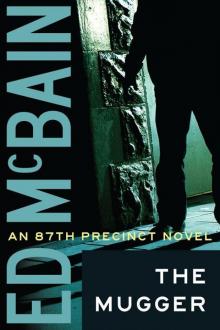 The Mugger
The Mugger Tricks
Tricks Shotgun (87th Precinct)
Shotgun (87th Precinct) Hail, Hail, the Gang's All Here!
Hail, Hail, the Gang's All Here!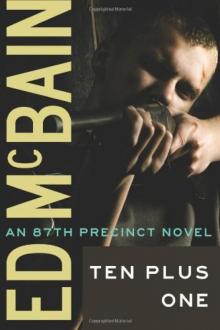 Ten Plus One
Ten Plus One Fat Ollie's Book
Fat Ollie's Book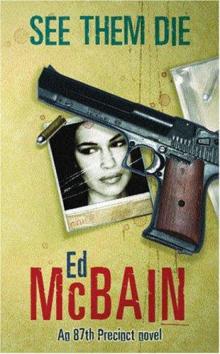 See Them Die
See Them Die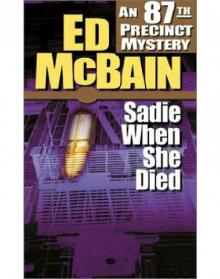 Sadie When She Died
Sadie When She Died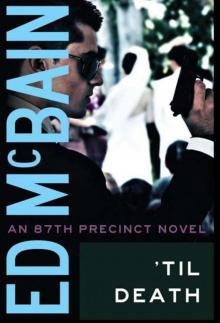 Til Death
Til Death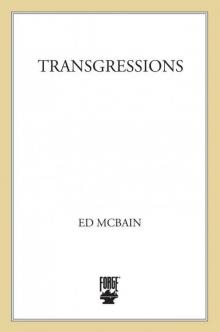 Transgressions Vol. 3: Merely Hate/Walking the Line/Walking Around Money
Transgressions Vol. 3: Merely Hate/Walking the Line/Walking Around Money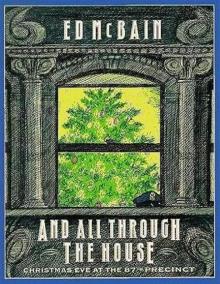 And All Through the House
And All Through the House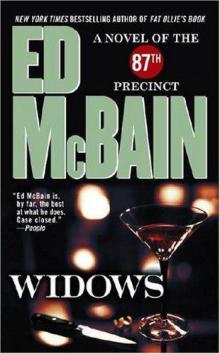 Widows
Widows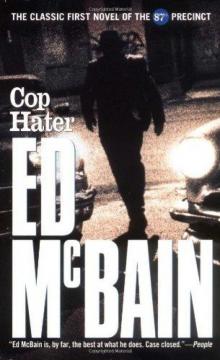 Cop Hater
Cop Hater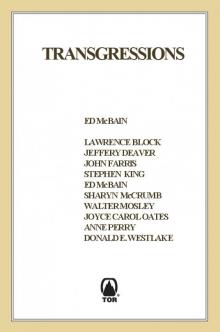 Transgressions
Transgressions